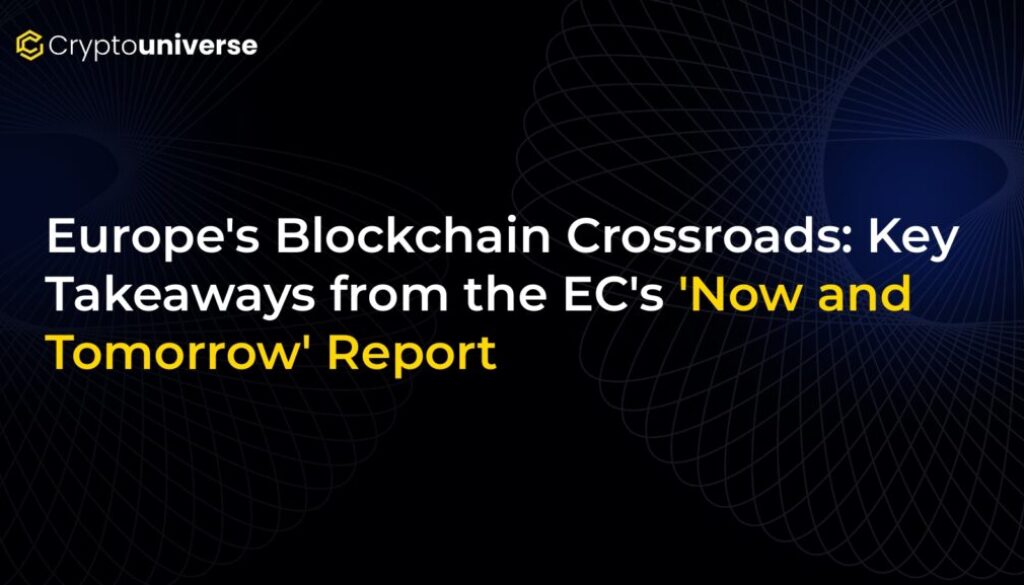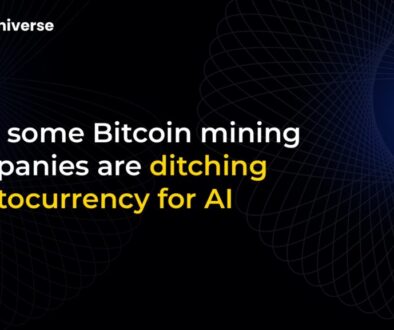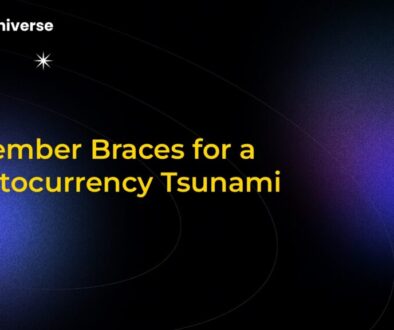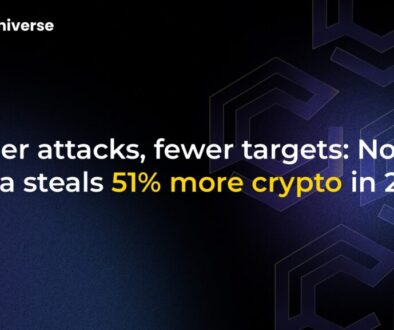Europe’s Blockchain Crossroads: Key Takeaways from the EC’s ‘Now and Tomorrow’ Report

The Future of Blockchain in Europe: A New Report Sets the Stage
The European Commission is sending a clear signal: blockchain technology is a critical component of Europe’s digital future. The recent launch of the ‘Blockchain Now and Tomorrow’ report, developed by the Commission’s Joint Research Centre (JRC), provides a crucial glimpse into the continent’s strategy for Distributed Ledger Technologies (DLT). The event wasn’t just a report launch; it was a high-level discussion on how Europe can navigate the complex landscape of innovation, regulation, and global competition to become a leader in the blockchain space.
As the new European Commission prepares to take office, the insights from this report offer a roadmap for what’s to come. Here are the key takeaways every developer, investor, and business leader in the crypto space needs to know.
The Race for Global Leadership is On
There was no ambiguity in the opening message from JRC’s Director General, Vladimir Šucha: Europe must take a leading role in the blockchain revolution. The sentiment was echoed by Mark Nicklas from DG GROW, who emphasized the need for Europe to pool its resources and coordinate its actions to effectively compete with the established dominance of the US and China.
While Europe may be playing catch-up, the Commission believes it is well-positioned to become a top contender. To make this vision a reality, several key initiatives are already underway or in development, including:
- The EU Blockchain Observatory and Forum: A hub for knowledge sharing and collaboration.
- The European Blockchain Partnership: An initiative to develop a pan-European public services blockchain.
- A new Blockchain and AI Fund: A strategic investment vehicle to fuel innovation.
The message is clear: Europe is moving beyond research and into strategic action to secure its digital and economic autonomy.
The Regulation Tightrope: Finding the Balance Between Safety and Speed
Perhaps the most critical discussion revolved around regulation. With the recent turbulence in the cryptocurrency markets, regulators are under pressure, but EU officials cautioned against a knee-jerk reaction that could stifle growth.
Peter Kerstens of DG FISMA highlighted the US approach of ‘innovate first and regulate later’, contrasting it with Europe’s traditionally more cautious stance. He advocated for technology-neutral regulation—rules that focus on the activity being performed rather than the underlying technology, ensuring a level playing field for all innovations.
Pēteris Zilgalvis, Head of Digital Innovation and Blockchain at DG CONNECT, championed the use of regulatory sandboxes. These controlled environments allow startups and established companies to test new blockchain-based products and services with real users under regulatory supervision. This approach fosters innovation by allowing live experimentation while managing potential risks, offering a practical middle ground between unchecked development and overly restrictive laws.
Beyond Finance: Unlocking Blockchain’s True Potential
While finance and crypto have been the public face of blockchain, the report strongly emphasizes that the technology’s most profound impact may lie in non-financial sectors. The decentralized, transparent, and immutable nature of blockchain makes it a powerful tool for a vast array of industries.
Panelists pointed out that the slow uptake in traditional finance is partly due to blockchain being the ‘antithesis’ of centralized banking systems. However, its potential is waiting to be unleashed in other areas, including:
- Supply Chain Management: Enhancing traceability and transparency from source to consumer.
- Intellectual Property: Creating immutable records of ownership and protecting creators’ rights.
- Healthcare: Securing patient data and streamlining records management.
- Public Services: Improving the efficiency and security of government operations.
Furthermore, the report suggests that the full power of blockchain will be realized when it is combined with other emerging technologies like the Internet of Things (IoT) and Artificial Intelligence (AI), creating new, smarter, and more autonomous systems.
A Problem-First Approach: Don’t Use Blockchain for Blockchain’s Sake
In a refreshing dose of pragmatism, representatives from the UN World Food Programme and the World Economic Forum urged a shift in perspective. The conversation, they argued, should not start with “How can we use blockchain?” but rather with “What is the business or societal problem we need to solve?”
This problem-first mindset positions blockchain as a potential tool in a larger toolkit, not a universal solution. It encourages a focus on purpose and tangible outcomes, ensuring that DLT is integrated where it adds genuine value, rather than being implemented simply for the sake of innovation. This practical approach is essential for moving beyond hype and achieving mainstream adoption.
What This Means for the Future
The launch of the Key Takeaways from the EC’s <'Now and Tomorrow' Report> marks a pivotal moment. With President-elect Ursula von der Leyen’s administration expected to place a greater emphasis on digital technologies, the next five years will be formative for Europe’s blockchain ecosystem. For digital companies and innovators, this is a golden opportunity to engage with policymakers in Brussels, help shape a favorable regulatory environment, and play a part in building the next generation of the internet.


